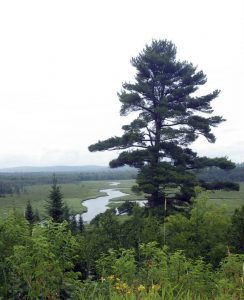Maine introduced strict regulations on clearcutting in 1989 via the Forest Practices Act, this in a state where only 6% of the land is owned by the state. There is a lot we can learn from their attitudes and experience, especially given broad similarity of landscapes and forests to Nova Scotia.

Maine’s private landowners own over 95% of the state’s land. Corporate forest landowners own nearly half the state; small woodlot owners, farmers, and residential landowners own much of the remainder. Private landowners are integral to the conservation of our wildlife heritage and natural resources and are often committed in principle to stewardship of endangered or threatened species. Source: Maine Gov.
Some links
Maine Forest Service..Rules and Regulations..Timber Harvesting
Maine Forest Service: Outcome Based Forestry
The Forestry Rules of Maine 2014: A Practical Guide for Foresters, Loggers and Woodlot Owners (PDF, 5 MB)
Evaluating the Impact of Abrupt Changes in Forest Policy and Management Practices on Landscape Dynamics: Analysis of a Landsat Image Time Series in the Atlantic Northern Forest
Paper by K.R. Legaard et al. 2015 in Plos One (Open Access journal)
The Forests of Maine.
Overview and history, 1994 Univ. of Maine. (A map in the article mistakenly places NS in the boreal forest belt.)
Survey and Analysis of Local Forestry-Related Ordinances in the Northeast, Mid-West and Western United States
Thesis by William F. Johnson, 2003. Good summary of Maine FPA.
FAQ’s About Maine’s Forests – Overview
In Forests for Maines Future
Double Bottom Line: Managing Maine’s Forests to Increase Carbon Sequestration and Decrease Carbon Emissions.
Mitch Lansky, March 2016. Summary
An in-depth, critical, comprehensive examination of the opportunities for Maine’s forestry industry to increase carbon sequestration and decrease carbon emissions.
Focus Species Forestry: A Guide to Integrating Timber and Biodiversity Management in Maine
by Robert R. Bryan Maine Audbon, 98 pages. Most of the species are shared with Nova Scotia.
Wabanaki Traditional Cultural Lifeways Exposure Scenario
Prepared for EPA in collaboration with the Maine Tribes by Dr. Barbara Harper, DABT, AESE, Inc. and Professor Darren Ranco, PhD, Environmental Studies and Native American Studies, Dartmouth College July 9, 2009/ “This project was a coordinated effort among the five federally recognized Tribal Nations in
Maine and the US EPA” 104 pages….The purpose of this report is to describe Maine tribal traditional cultural uses of natural resources, and to present them in a format that can be used by EPA to evaluate whether or not tribal uses are protected when they are requested to review or develop water quality standards in waters that include Indian territories in Maine. These traditional uses are described as a single best representation of subsistence-traditional lifeways. Present-day environmental conditions may not allow many people to fully engage in a fully traditional lifestyle until resources are restored, but this is still an “actual” and not “hypothetical” lifestyle.”
The Case Against Intensive Forest Management in Maine
by LeRoy Bandy, Ph.D and Barbara Bandy, M.S. See also their Annotated Bibliography on the Effects of Clearcutting An older document 9circa 1998) but still relevant.
